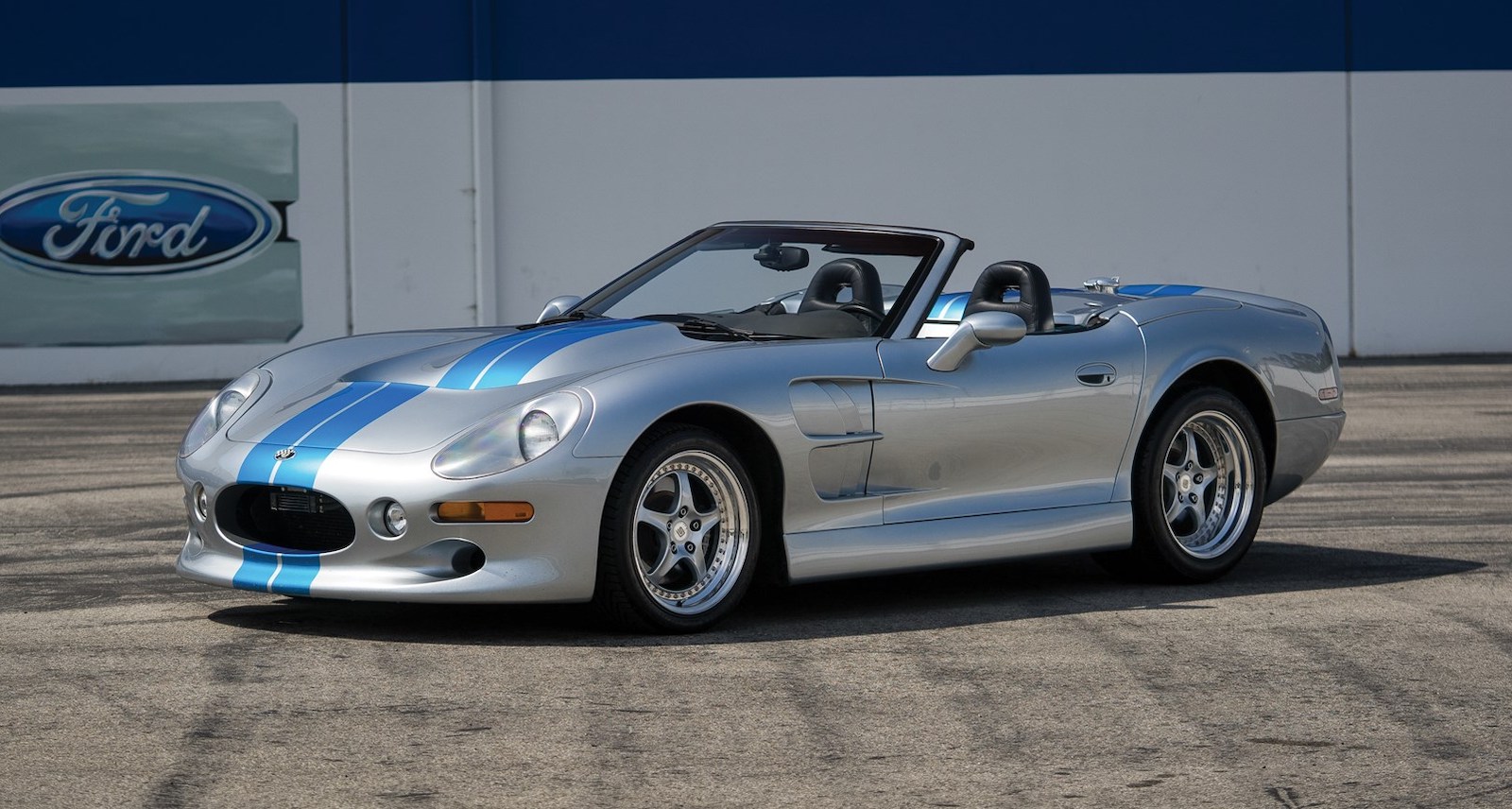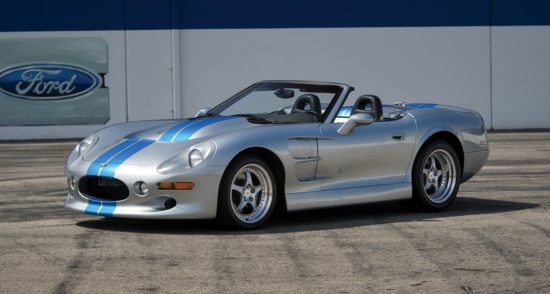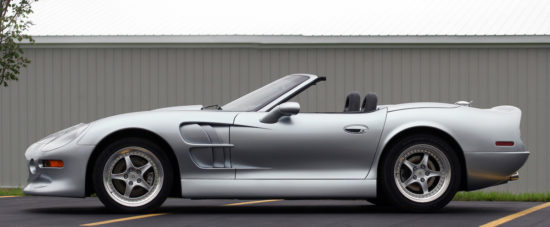by Wallace Wyss –
Carroll Shelby, as tall and proud as he was in public, was painfully shy. He liked to either be in control of the situation or not be there. So he had a few recurring doubts, one of which is; How can he be thought of as a modern automaker if all he can talk about is Cobras and GT40s? Once those cars were done, he began making replica Cobras, but they were still not modern cars, only skating into legality by virtue of being kit cars.
But hope springs eternal. He made friends with a man that ran Oldsmobile, and decided that he could make a modern car, a modern interpretation of the Cobra so to speak, with an Oldsmobile engine.
This was right before the new century so the first one made it out the door in 1999, after several years of delay. It is difficult to say who designed it, as Shelby had learned the hard way (through Pete Brock getting a lot of publicity for the Daytona back in the Sixties) that designers got in the way when it came time to take publicity pictures.
Right from the get-go the project was doomed. For one thing, his friend at Oldsmobile died, and the newcomer didn’t cotton to this Stetson wearing Westerner. Another problem was Shelby had booked passage on a doomed ship. Olds was failing and would eventually disappear, along with Pontiac.
The styling was typical macho front engined car, long long hood, oval grille cavity, stripes everywhere, rear ducktail spoiler, round Ferrari-ish taillights in a tacky housing. Huge vent on the side similar to some Drogo built Ferrari one-offs. Basically nothing new, but calculated to fill the void that had existed once the big block Cobra ceased production.
Shelby had wanted to make it with an engine that GM had developed for the Indy Racing League but instead he got a much weaker engine, from the 4.0-liter Aurora, a 320-hp V-8. That was mated to a 6-speed manual from ZF. And then Shelby wanted to make it lightweight. That was a big help back when he made the Cobra, which had a body that weighed around 200 lbs. soaking wet. Cobras were made in England by A.C Cars Ltd, because it would have cost too much to make aluminum bodies in the US. This time for his Series I, he chose carbon fiber. But the carbon fiber bodywork ended up weighing more than anticipated.
The chassis was pretty modern. Formed of extruded and formed 6061 aluminum. Welded together and post-heat-treated for maximum strength throughout, it also used aluminum honeycomb panels bonded into the floorboards and rocker panels for added stiffness.
I take the performance claims with a grain of salt such as the 0-60 mph in 4.4 seconds and a quarter mile time of 12.8 seconds reaching the quarter mile at 112 mph. Top speed was said to be 170 mph, which they claimed was 15 mph faster than the 427 Cobra. Well then how come at least one Cobra 427 racer was clocked at 199 mph?
Even as something as low tech as a manually operated convertible top added delays so they sold some with no convertible top at all.
Shelby was beset with production delays and his credibility was plummeting downward as the price kept moving upward. Originally it was supposed to be under $100,0000 but every few months, he would jack up the price, until finally one magazine tested one with the optional supercharger that was priced at $180,000, more than the mid engine Ferrari V8 of the time (ask yourself which is worth more today, the Series I or the 360 Modena?).
At some point Shelby sold his company to a company called Venture but they went bust, so Shelby bought back the company for peanuts. But by that time the certification for the year 1999 had expired, so the unbuilt cars were built as “component” (fancy phrase for “kit car”) cars. You could do that if you delivered a car without the engine and trans. (which, by sheer coincidence, could be installed by another business down the street…). Shelby was able to resurrect some Series I cars and keep making them.
Tom Tjaarda, the very same American who designed the Pantera over in Italy for DeTomaso, came along very late in the game offering to redo the car so there was indeed a Series 2 with minor upgrades in styling and performance. But reportedly only three were built. And this was after $5 million had been spent, much on trying to get it re-certified.
Shelby lost several million on the whole debacle, and only 249 were built (this number may or may not include the 3 Series 2 cars).
Will the car ever be worth what it cost new? I am going to go out on a limb and say categorically “no.” But will it ever be an interesting car to own? I say “Yes” and at least you can count on lots of Aurora engines in junkyards.
Where did Shelby make his mistake? I think by leaving the reservation with the Ford oval, where he had made his name so to speak.
Ironically a company in England named Safir had acquired a license from Ford to make the GT40, something Shelby would have been safer doing since the GT40 had all the bugs worked out of it. Safir shut down production after a few years but conveniently kept the rights to the name “GT40” so that Ford couldn’t use it when they made the ’05-06 Ford GT.
I thought of the Series I when I saw one recently at a Shelby club gathering, and I wonder if anyone even knew what it was. You could say it was the last “from the ground up” car Shelby tried to build, but for him, it was a bridge too far….
Let us know what you think in the Comments.
THE AUTHOR: Wallace Wyss is the co-host of Autotalk, broadcast weekly on KUCR FM radio in Riverside.







Here is the information board that an owner displays with his car.
Here are two photos that Bruce Caron sent to me from Cars & Coffee today in So. Cal.
Here is the second photo from Bruce.